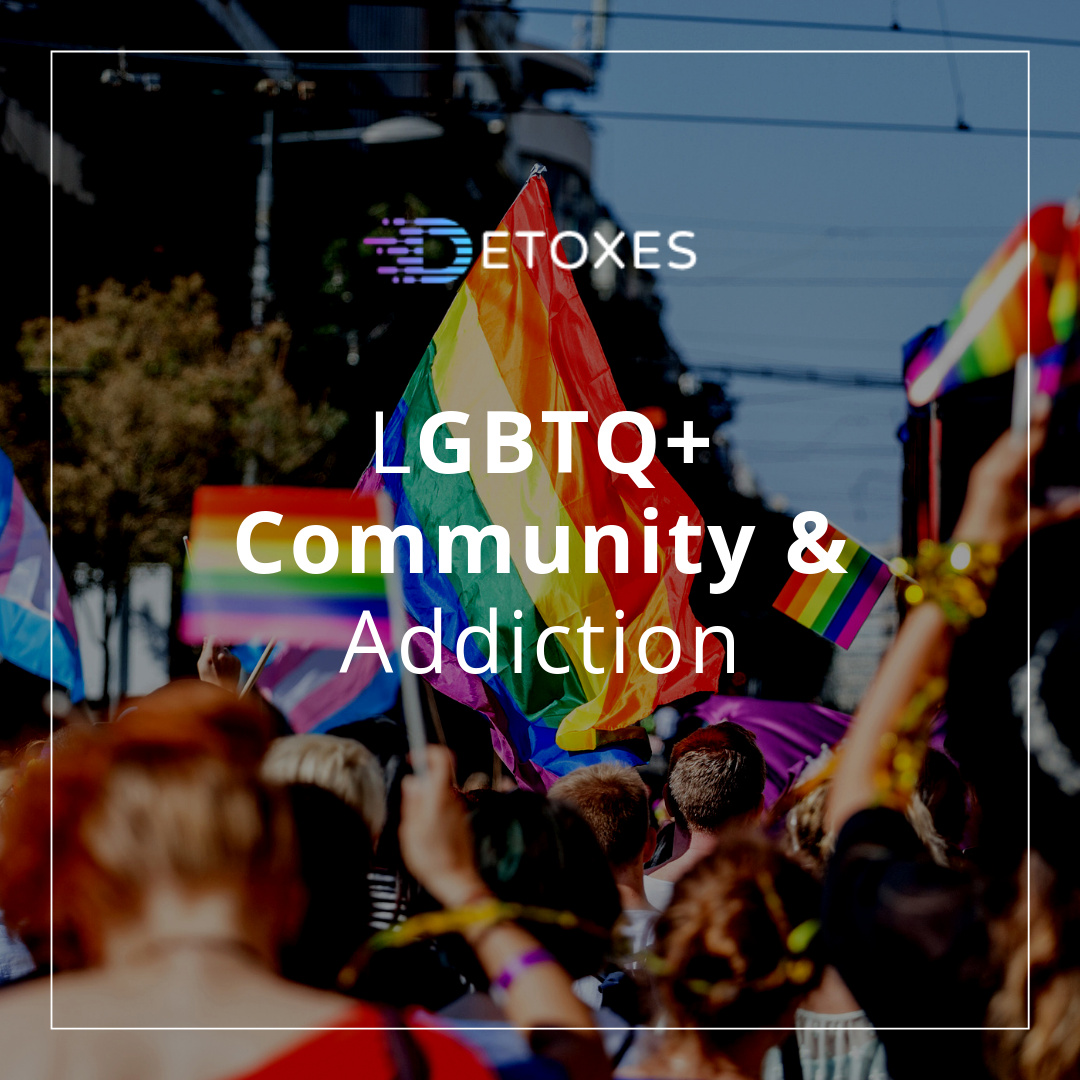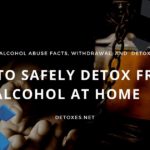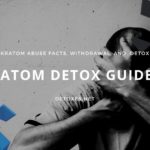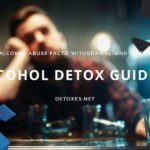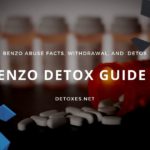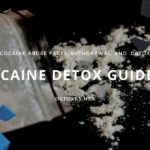LGBTQ+ Community & Addiction
Members of the LGBTQ+ (lesbian, gay, bi-sexual, transgender, queer) are nearly three times as likely as their straight peers to use a controlled substance4. For example, 25% of LGBTQ+s drink alcohol, while 5-10% of the general population does7. We’ll discuss in this report, the unique situations that drive LGBTQ+ members to a greater increased risk for substance abuse. We’ll also discuss some of the drugs prominent in this population and their specific harms.
First, we’ll define some critical terms and help readers understand LGBTQ+ persons and their substance abuse problems.
The LGBTQ+ Community
Most people have a pretty good idea of what the letters in the acronym LGBTQ+ stand for, but also may have trouble with a couple of the notes. Here’s a complete rundown to clear up any possible confusion.
L – Lesbian:
Women who are attracted exclusively or primarily to other women.
G – Gay:
This word generally refers to a person who is attracted to members of the same sex. In the acronym LGBTQ+, however, it is understood to refer to males since “L” refers to gay women.
B – Bi-sexual:
People of either sex who are attracted to and have romantic relationships with people of either sex.
T – Transgender:
The Human Rights Campaign defines transgender as “[a]n umbrella term for people whose gender identity and/or expression is different from cultural expectations based on the sex they were assigned at birth6.”
It is imperative for people to understand how the words “gender” and “sex” are used in the Human Rights Campaign’s definition — and throughout this report. While sex is determined by genitalia — with the two chief sexes being male and female—gender is an identity or societal role. If a person born female assumes a gender identity as male, he is transgender. The majority of transgender people have not undergone surgery to alter their sex.
Q – Queer:
This is a somewhat tricky term. A consensus definition is that “queer” is an umbrella term for all of the concepts in the acronym “LGBTQ+.” It can also mean any variety of non-straight gender or sexual identity. It is a reference to the idea of varied and fluid gender identities and sexual preferences. Thus, a person who is transgender could call him or herself “queer,” while a bi-sexual person may as well.
The concept of “queerness” is a good transition into an essential idea about all LGBTQ+-related issues. An accepted and promoted concept is that gender and sexuality are much more complicated or confusing to define than initially thought in the first half of the 20th century.
This idea encompasses the notion that there is not necessarily a need for a person to commit to or adopt a significant label or identity, such as bi-sexual or lesbian, or male-identifying straight transgender, etc.
One may have hard-to-define or less definitive sexual preferences or may have identities that they feel ‘aren’t neatly described by an existing label. However, because we are all sovereign entities as individuals and all have equal rights as humans, everyone should have a right to their specific identity. None should be considered lesser than others or live outside of what is considered “normal.”
A Quick Guide to the Numbers
Before we discuss the specifics, let’s refer to the statistics. In 2015, the Substance Abuse and Mental Health Services Administration (SAMSHA) conducted a survey12. There isn’t that much data on drug abuse and sexual minority groups as it’s an emerging area of study. However, here are the 2015 findings:
Note: Sexual Minority refers to “lesbian, gay, or bisexual.” It can be assumed that transgender would raise the percentages due to the extra susceptibility to stigma and mental health conditions10
| Heterosexual | Sexual Minority | |
|---|---|---|
| 17.1 | 39.1 | |
| Heterosexual | Sexual Minority | |
| 12.9 | 30.7 | |
| Heterosexual | Sexual Minority | |
| 4.5 | 10.4 |
As you can see, LGBTQ+ individuals are often three times as likely to have used illicit substances in the past year.
LGBTQ+ and Addiction to Alcohol
There are many reasons why members of the LGBT community may turn to drink. For a start, the stressor events present in their life, due to their sometimes automatic split from “normal” society.
LGBTQ+ members are more likely to start drinking at an earlier age, too9. This could be for two distinct reasons.
-
Alcohol depresses neurological processes, meaning that it temporarily relieves stress. This can often cause addiction and dependence. Risk factors involving the social and interpersonal effects of alcohol11 may not be present in the case of LGBTQ+, however.
Risk factors such as “family disruption and problems at the workplace (including unemployment)11 may not act as a deterrent. If a family is stigmatizing their son or daughter because of their sexual identity, family disruption due to alcohol may not be seen as a problem.
As for unemployment, LGBQ individuals have a 4% higher national unemployment rate than their heterosexual counterparts. Non-binary and transgender individuals are even higher, at 7% above the national average5. If unemployment is expected, it is not a deterrent.
-
Due to societal stigma, LGBTQ+ individuals may either drink more in their community and culture. They may drink more to show they’re aligning their values with heterosexual culture.
LGBTQ+ and Addiction to illicit Substances
The use of illicit substances is similar. Individuals who feel stigmatised against or that don’t feel they “fit in” may turn to illicit substances to lessen their stressful situation.
One meta-analysis found that sexual minorities were 90% more likely to abuse substances than their heterosexual counterparts.8
This could be due to the various effects of illicit substances. The prior statistics show the likeliness of LGBTQ+ individuals to misuse prescription medication, such as xanax.12 This could be because of the anti-anxiety properties, and the stress of feeling on the fringe of society. Another misuse could be cocaine due to a want to feel more confident or comfortable in one’s skin. Another is marijuana, due to the effect of feeling relaxed and it’s temporary anti-anxiety properties.
Stressors That Lead to Substance Abuse Among LGBTQ+
As we can see, forging and coming to terms with identity is a significant challenge for many members of the LGBTQ+ world. If one is to identify as one gender in some ways and another in others or to be genderless, or something in between, one has to spend time and emotional effort on these issues. However, they also may undergo ridicule or scorn from mainstream society.
In addition to these anti-gay sentiments, LGBTQ+ people face institutional discrimination too. The Center for American Progress reports that in 2011, up to 43% of gay people have endured discrimination or harassment in the workplace2.
Without exhaustively listing dramatic and saddening related statistics, ‘we’ll explain that the net effect of a whole stock of negative actions on LGBTQ+ can be a condition called Minority Stress. Rather than stress in the traditional sense, such as feeling pressure due to an upcoming deadline, this can be thought of more as a stressor, meaning a set of conditions that drag a person down emotionally and psychologically. Minority stress is felt by anyone who is picked on, insulted, marginalized, or discriminated against due to being outside the social norm4.
Members of the LGBTQ+ community often have strained familial relationships, including, in extreme cases, being disowned from their family at a young age and leaving home, meaning having to find hostels, shelters, or friendly homes to stay in. The process of coming out is a particular stressor that can sometimes have long-lasting impacts.
Mental Health as a Stressor
Addiction is often comorbid with a mental health condition. In the LGBTQ+ community, it is reported that there is a disproportionate amount of mental health conditions. There is a disparity between the LGBTQ+ community and their heterosexual counterparts1
Of course, with a high amount of constant stigma, a mental health condition is much more likely to manifest9. Whether it’s anxiety, depression, or bipolar, there is clear causation between mental health and substance abuse, and there is a disproportionate amount of mental health conditions within the LGBTQ+ community.13
What this means is that substance abuse is much more likely because of two reasons:
-
One: An urge to “level” oneself during an episode. Conversely, this can often make an episode worse, especially if someone is drinking alcohol to numb the pain of depression. Alcohol is a depressant, meaning that even if a temporary alleviation is felt, it will be temporary.
If a manic episode is occurring in an illness such as Bipolar or instances of Borderline Personality Disorder, using a “downer” such as marijuana or heroin will make the episode worse after the effects of the drugs have worn off, either causing harm or a dependency.10
-
The specificity of LGBTQ+ circumstances exacerbating mental health conditions3. While the above comment can be applied to a general population of those with mental health, the disproportionate amount of mental health conditions in the LGBTQ+ community makes this causation worse.
Mental health conditions and episodes are more difficult to break free of due to the constant stigma, creating a complicating and difficult mixture.7
A Culture that Promotes Substance Abuse
Within LGBTQ+ communities, we see that people often look for ways to escape alienation and the stressors that come with it. It can involve the sort of refuge-finding that many people experience with being drunk or high or sedated. The LGBTQ+ community provides another environment that spurs drug and alcohol abuse.
To be around accepting people, LGBTQ+ teens and adults often turn to clubs and bars exclusive to their community. Just as raves or dance clubs frequented by straight people will include not only drink but also drugs like MDMA (ecstasy or Molly) and meth, so do LGBTQ+ gatherings.
There is a higher prevalence of drug use in the gay and lesbian culture than in the mainstream. When people require a well-defined and close-knit community, they are more prone to engaging in activities like drugs to go along with the crowd. The experience of living “outside the norm” due to a sexual preference they were born with, removes one significant barrier to drug use, the fear of straying from strict rules of society.
References
- Anderson, S. (2018). Mental Health Disparities in the LGBT Community: The Role of Stigma Virginia Henderson. Retrieved July 6th, 2019.
- Burns, C and Krehely, J. (2011). Gay and transgender people face high rates of workplace discrimination and harassment. Center for American Progress. Retrieved April 18th, 2019.
- CenteronAddiction. (2017). Retrieved from https://www.centeronaddiction.org/the-buzz-blog/why-does-lgbt-community-face-higher-risk-substance-abuse-and-addiction. Retrieved July 6th, 2019.
- Centers for Disease Control and Prevention. (2014). 1991-2013 High School youth risk behavior survey data. Centers for Disease Control and Prevention. Retrieved April 18th, 2019.
- Fast Company. (2017). LGBT workers still face higher unemployment rates. Retrieved from https://www.fastcompany.com/40493319/lgbtq-workers-still-face-higher-unemployment-rates
- Human Rights Campaign. (n.d.). Sexual orientation and gender identity definitions. Human Rights Campaign. Retrieved April 18th, 2019.
- Hunt, J. (2012). Why the gay and transgender population experiences high rates of substance use. Center for American Progress. Retrieved April 18th, 2019.
- Marshal, M.P. Friedman, M.S. Stall, R. King, K.M. Miles, J. Gold, M.A. Bukstein, O.G. Morse, J.Q. Sexual orientation and adolescent substance use: a meta-analysis and methodological review. Addiction. Retrieved July 6th, 2019.
- McCabe, S.E. West, B.T. Hughes, T.L. Boyd, C.J. Sexual orientation and substance abuse treatment utilization in the United States: results from a national survey. J. Subst. Abuse. Treat.. Retrieved July 6th, 2019.
- Mental health America. (2016). Retrieved from https://www.mentalhealthamerica.net/lgbt-mental-health. Retrieved July 6th, 2019.
- Rehm, J. (2011). The Risks Associated With Alcohol Use and Alcoholism. Alcohol Health Research. Retrieved July 6th, 2019.
- SAMHSA. (2016). Sexual Orientation and Estimates of Adult Substance Use and Mental Health: Results from the 2015 National Survey on Drug Use and Health. Retrieved July 6th, 2019.
- Ward, B.W. Ph.D, Dahlhamer, J.M. Ph.D, Galinsky, A.M. Ph.D & Joestl, S.H. S. Ph.D. (2013) Sexual Orientation and Health Among U.S. Adults: National Health Interview Survey, 2013. National Health Statistics Reports. Retrieved July 6th, 2019.
Medically Reviewed: September 25, 2019

All of the information on this page has been reviewed and verified by a certified addiction professional.


